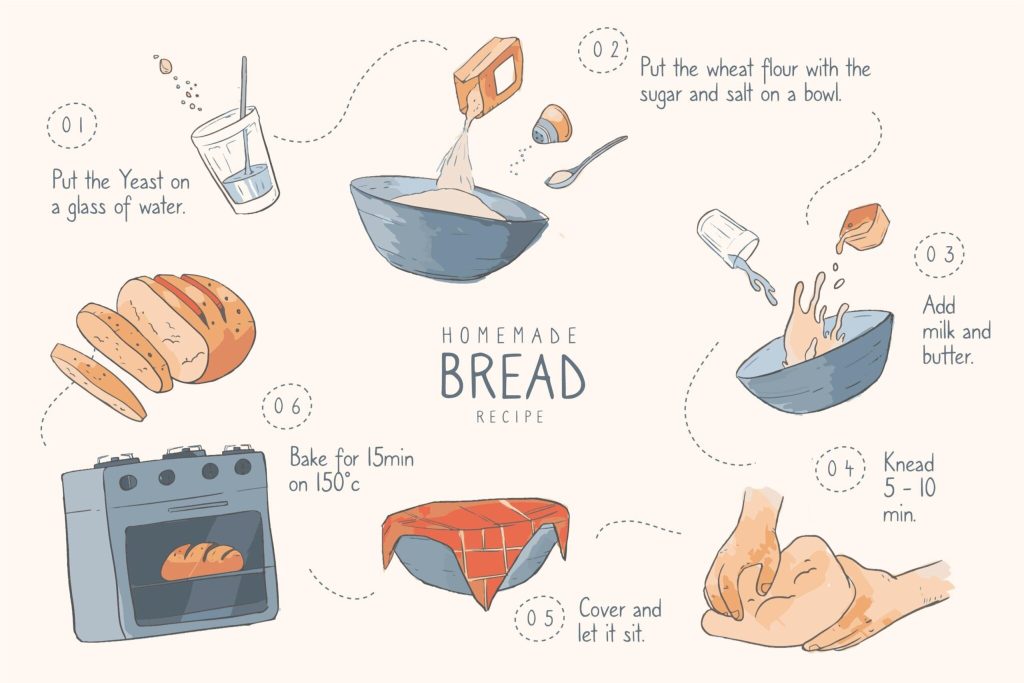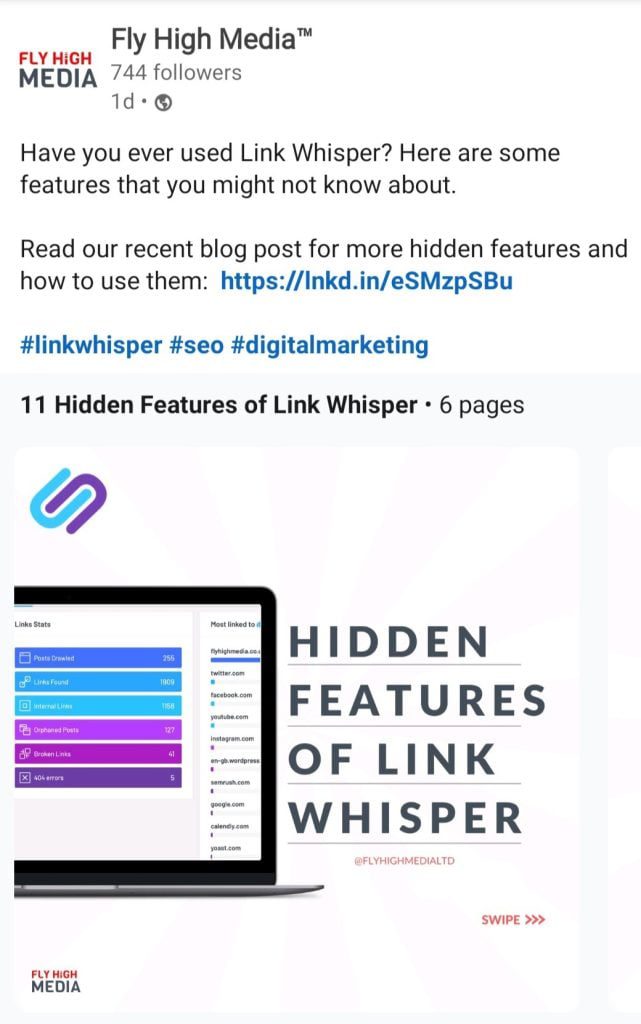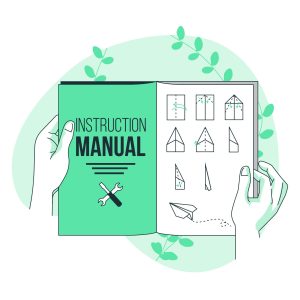How to Write Clear Instructions for Your Online Audience

Instructions are common in life, from how to behave as a child to how to process a sale or reassure a client and everything in between. However, a significant difference exists between following verbal directions and writing instructions for your target audience to understand.
Like any content, your instructions must be clear, engaging for your potential clients, and relevant to your business to increase your conversion rate. But how do you create the perfect how-to guide for your customers?
Take a look as we break down five tips on how to write clear instructions for your online audience.
In this blog, we have included examples of crafting instructions, making it useful if you run a crafting business. However, you can use this guide as a template for other industries and tasks.
1) Who Is Your Audience?

To understand how to write instructions, you first need to establish who your audience is.
Look at other online how-to guides around your topic or industry to see how they are written and formatted. This can indicate the style and tone your audience needs to understand your content.
Do they know your industry and topic already? Are they knowledgeable about what you have to say? Or are they beginners just starting in this area?
Who your online audience is will influence the content you create, how you write it and the language you use.
For example, a knitting pattern often uses abbreviations instead of complete words to reference which stitch to use next. In this instance, k2 means knit two stitches. Someone familiar with this craft is likely to understand the abbreviation, whereas someone with little experience with patterns may struggle to follow it. This is why you should write your guide according to whether you’re aiming your content at an audience of beginners or experts.
To combat any confusion, you can start your instructions with a list of abbreviations your audience needs to know to follow your guide. To continue the knitting example, you can also include a small manual, or a link to one, for how to complete that stitch if it is more complicated.
A more experienced audience member may not need this aid, but newer readers may appreciate the additional support.
Your online audience also impacts the instructions you write about. For example, if your target audience is already well-versed in your industry, you can focus on more complex procedures or activities. If your target audience is beginners, you may want to explain the first things a person should know about your industry or task.
2) Choose Your Channel
With the vast array of social media and blogging platforms available, you must decide which platform or platforms you wish to publish your instructions on.
The platform you use will impact how you present your content and may be influenced by your audience.
Using crochet patterns as an example, some creators upload patterns onto a social media platform, including abbreviations and the occasional word, such as the yarn colour. This style works if their audience is more experienced, but a newer crocheter may find the pattern difficult.
In this situation, you can submit your instructions onto some of these platforms using abbreviations and link to the more detailed instructions with abbreviation explanations in the captions. Or, you can be more extensive and spread them over a more extended image carousel (or the appropriate format for that social media platform).

With that in mind, use social media to promote your content! Make a post on Instagram, LinkedIn, Facebook or whichever platform your business uses and link to your instructions.
Your social media followers can share your posts, helping to spread brand awareness and promoting exposure among your target audience. This increased visibility can improve the number of impressions your web pages receive and your conversion rate.
3) Make it Visual

While it’s essential to make your instructional writing clear and informative, you also need it to appeal to your audience.
Including images in your blog posts is a great way to break up large chunks of text so your target audience is more likely to continue reading. However, you need to ensure the images are relevant to your topic.
If you’re writing instructions for kids’ crafts, you can use images to reflect the different steps or the final product. This addition provides your content with colour, making it more engaging for your audience.
Images are not your only option. Infographics are ideal for conveying information in a visually interesting way, particularly if you are explaining something complicated.
The structure of your instructions can also contribute. Include plenty of white space to help prevent the text from appearing crowded, such as using short paragraphs and bullet-pointed lists.
For example, you can format your instructions via numbering, providing the content with plenty of white space and making it more readable for your audience.
4) Let Someone Test Your Instructions

This step isn’t always possible, but get someone else to test your guide if you can.
Your content must be easy to understand, so having someone attempt to follow your instructions can help identify any sections they find difficult to understand. You can then make the necessary amendments to improve them.
Even if someone can’t physically follow your instructions, they can still proofread them to ensure it makes sense. This step should happen before you publish your instructions so your audience can follow them immediately.
5) Make your content SEO friendly

Once you’ve finished writing your instructions, you must ensure your audience can find them!
Search engine optimisation (SEO) is a continuous process that you should engage in throughout the writing process, such as through keyword research (more on that later). Still, there are some things you can complete afterwards.
With the prevalence of mobile phones in the modern world, mobile optimisation for your site is crucial to SEO and digital marketing. This process improves user experience as it enables your audience to access your web pages from a smaller screen without lowering the quality of your site, therefore improving your conversion rate.
You can also implement the relevant schema markup to help increase organic traffic to your site. For example, recipe schema is ideal if you have instructions on how to bake a cake, whereas how-to schema is another beneficial type you can use.
By using the correct schema, search engines can understand your content better, so more people can find your site and use your instructions. Additionally, it can improve your chances of featuring a rich result (a preview of your content from your site, such as reviews), which can lead to more traffic.
Furthermore, internal and external links in your instructions can improve conversions on your site and boost your credibility in your field. Internal links enable you to link to other articles, instructions, products or services on your website, whereas external links can provide more information or support a statistic through other websites.
When done correctly, links can make your business a source of authority within your industry. Just ensure your links are relevant and don’t come across as spam!
Why is keyword research important?
Keyword research means looking for and analysing those words and phrases that people type into search engines and using them within your content strategy. For example, you may include these words in your instructions, blog posts and other content that needs optimising for search engines.
When using this approach, you mustn’t use too many keywords in one section of your work. This is called keyword stuffing and is a black-hat SEO technique. To avoid this, use no more than two keywords within a 100-word section of text.

However, correctly using it is crucial for your website as it allows you to work out which words and phrases to target, which can make your content more visible to your target audience.
For example, if ‘crafts for kids’ was a keyword you wished to target, you could create content surrounding this topic, such as what decorations they could make for an upcoming holiday or celebration.
Instructions can be a great piece of content for your business and promote traffic to your site, but the quality of the work could be the difference between a conversion and losing a client.
If you are looking for support with your website, Fly High Media are here. Our experienced SEO team can help you employ the strategies to boost your search engine results page (SERP) ranking, so contact us today and see how we can support your business!
Contact Fly High Media today!
Contact Us
Cheshire (Head Office)
Manchester
Get in touch
Let’s find the best solution for your business
